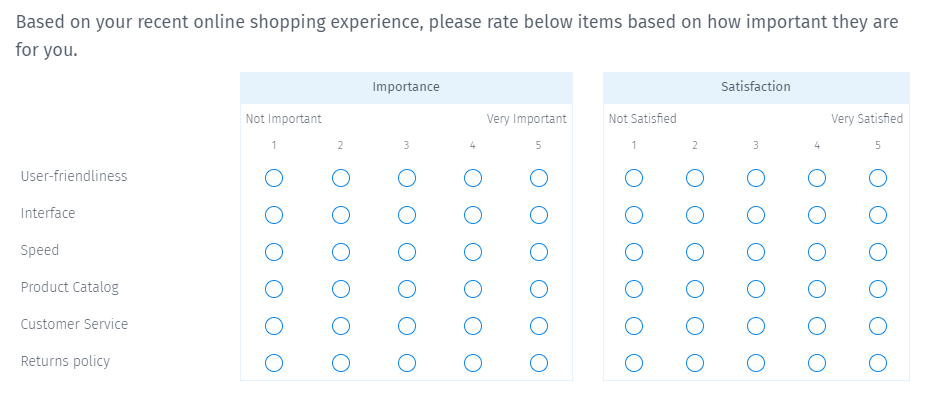
Customer satisfaction results
With the average customer satisfaction score above 8, you might tend to believe most of your customers are happy. While it is not wrong technically, there is a risk of overlooking passives and detractors. This bunch of users can be turn out to be detrimental to the growth of your business if not paid attention. They might spread their negative experience and prevent others from buying your products or services. Hence, just as it is important to know whether your customers are satisfied, it is equally essential to reduce the number of detractors in the customer satisfaction survey process.
How to use customer satisfaction survey results?
You can use the results of the customer surveys to calculate Net Promoter Score (NPS), CSAT score, Customer Effort Score (CES), and other customer satisfaction metrics.
Generate reports and identify areas of improvement. Share the results with the respective teams and ask for their plans to improve customer experience.
Below are the top 4 ways to use customer satisfaction survey responses.
1. Use customer satisfaction surveys to measure quality
Online surveys are an awesome tool to measure the quality of your business process. Suppose your organization follows any quality management standards such as ISO, TQM, Lean Manufacturing, Six Sigma, or any other system design to maximize profits while eliminating waste. In that case, you’ll want to lean into this section.
Most quality systems are rooted in understanding real customer needs and ensuring that all of your business systems are focused on meeting those needs with as little waste as possible. No matter which method you are using, a customer satisfaction program is the foundation.
A core principle of any of these systems is NOT to tell you how to measure quality; it’s defining what matters to your customers and then developing a business and quality system designed to deliver the desired outcome.
The best question type suited for this in the survey is the importance/satisfaction side-by-side matrix question.

Create a list of items that is a mix of the following:
- What you think is important to customers
- What the industry or competition is offering that you don’t
- What customers have told you is important
Then send it out as a survey. I would recommend that you don’t have more than 10 attributes and only add one other question to your survey:
“What is the one thing (COMPANY) can do to improve your experience with us?”
Keep it an open-ended question and see what happens. It will help you create a wonderful foundation for your business and quality system.
2. Measure your marketing effectiveness with customer satisfaction surveys
The best way to ensure a good return on marketing investments is by using a customer satisfaction survey.
The Gallup Organization has a tried-and-true methodology, which they call Customer Engagement. The Gallup Customer Engagement survey consists of 11 questions that measure your customers’ Satisfaction and Loyalty and Emotional Attachment to your brand.
Here are the 11 Questions Outlined by the Gallup Customer Engagement Survey
- Overall, how satisfied are you with the [Brand]?
- How likely are you to continue to choose/repurchase/repeat (if needed)?
- How likely are you to recommend [Brand] to a friend/associate?
- [Brand] is a name I can always trust.
- [Brand] always delivers on what they promise.
- [Brand] always treats me fairly.
- If a problem arises, I can always count on [Brand] to reach a fair and satisfactory resolution.
- I feel proud to be a [Brand] [customer/shopper/user/owner].
- [Brand] always treats me with respect.
- [Brand] is the perfect [company/product/brand/store] for people like me.
- I can’t imagine a world without [Brand].
3. Use customer surveys to develop new products and services
It’s easy to get tunnel vision about customer satisfaction surveys. One trap is to look at the surveys as a “grade” or evaluation of your performance. That’s one aspect of the survey, but an even more powerful feature of a good customer survey is that it opens up the conversation for developing new products and services.
Instead of just reporting on the results, why not drill down into the results and connect with specific customers to get deeper insights into what’s missing for them and their experience with you. You might discover a real competitive advantage hiding inside your feedback.
4. Arm your employees with customer insights
Your employees can benefit from seeing the results of your customer happiness surveys. Remember, the results aren’t there for you or the management to beat up on the employees. Engage them in the conversation about the results and get their side of the story.
You’re going to get two benefits from this process:
- Your employees will be more engaged in business. They will know how their efforts impact the lives of customers.
- They will give you deeper insights into how to improve on those results.
To recap…
Conduct surveys regularly and analyze scores to keep a track of progress. Connect the efforts with the results of CSAT surveys. Keep in touch with passives and detractors so that you don’t lose out on them to your competitors. Make sure you convey to them that you are working on improving their experience.
Looking to deliver exceptional customer experience? Discover more about how to delight your customer at every touchpoint and turn them into brand advocates.







